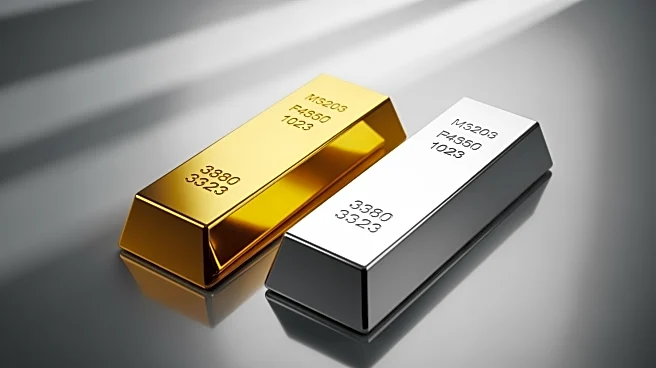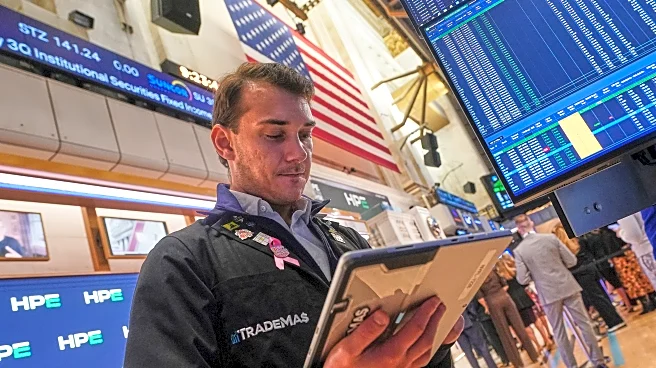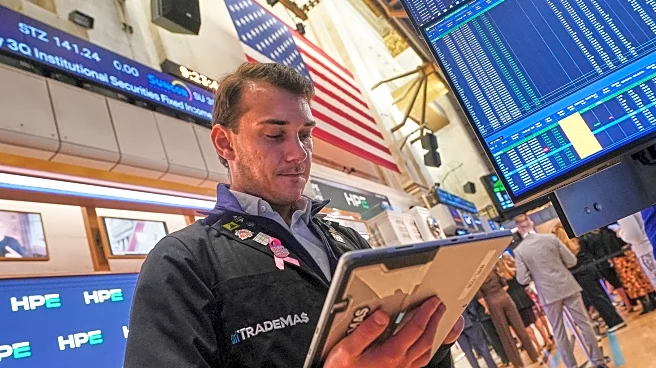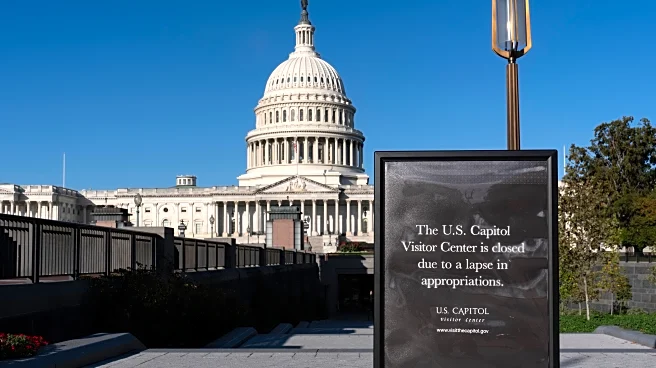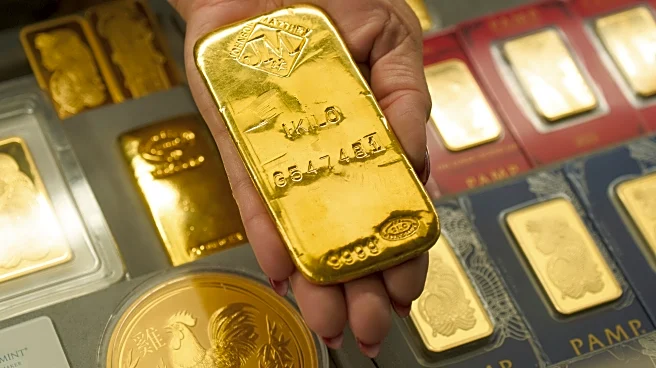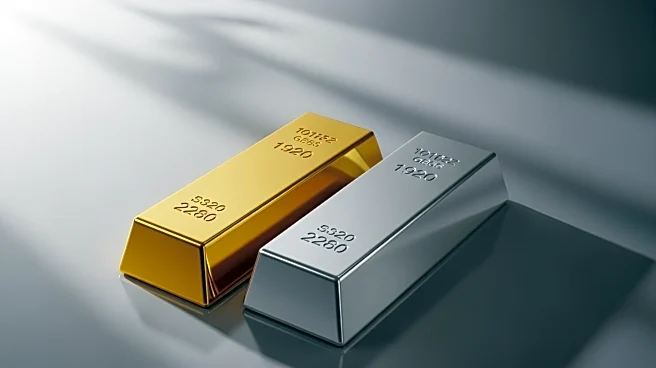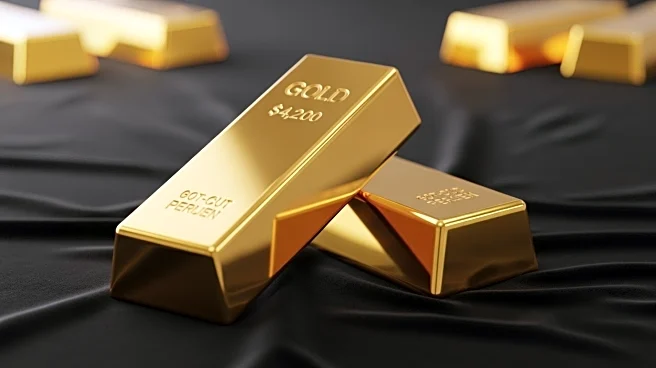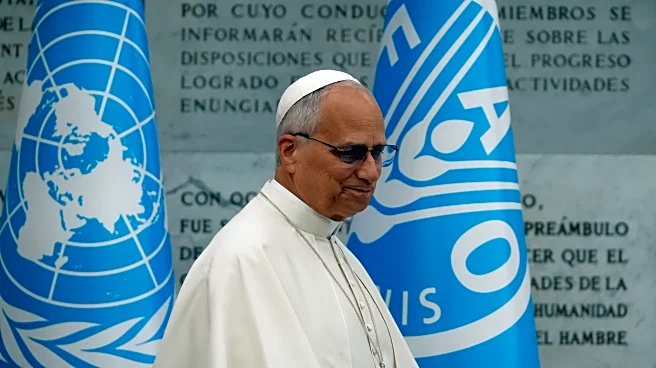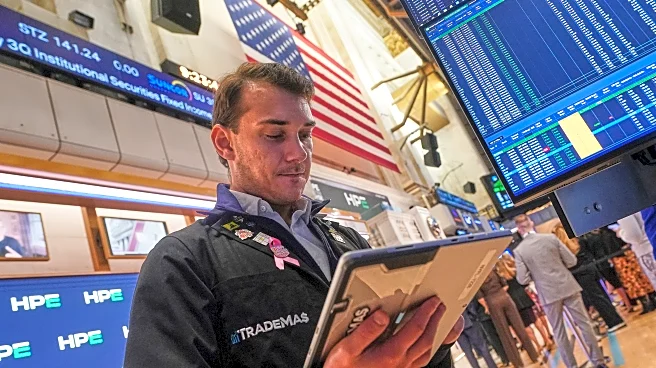What's Happening?
Gold and silver prices have experienced significant increases recently, with gold futures rising nearly 60% since the beginning of 2025, reaching approximately $4,268 per troy ounce. Silver futures have seen an even larger percentage increase, up about
70% year to date, trading at over $50 per troy ounce. This surge is attributed to various factors, including geopolitical tensions, economic uncertainty, and the weakening U.S. dollar. The ongoing government shutdown and trade wars, particularly those involving President Trump's tariffs, have contributed to investor anxiety, driving interest in precious metals as a 'safe haven.' Additionally, the Federal Reserve's recent interest rate cuts have made gold a more attractive investment. Central banks worldwide have also shown strong demand for gold amid geopolitical tensions, such as the wars in Gaza and Ukraine.
Why It's Important?
The rise in gold and silver prices reflects broader economic and geopolitical uncertainties impacting the U.S. and global markets. Investors often turn to precious metals during times of instability, viewing them as a hedge against inflation and currency devaluation. The increased demand for gold and silver can affect various stakeholders, including jewelry merchants, investors, and central banks. While some view gold as a reliable investment, critics argue it may not always serve as an effective inflation hedge. The surge in prices also highlights potential environmental and health concerns, particularly related to illegal gold mining practices that use toxic mercury, posing risks to workers and communities.
What's Next?
The future trajectory of gold and silver prices will likely depend on ongoing economic and geopolitical developments. If the Federal Reserve continues to cut interest rates, it may further boost demand for gold. Additionally, the resolution of trade tensions and the government shutdown could influence investor sentiment and market dynamics. Stakeholders, including policymakers, investors, and environmental advocates, will need to monitor these factors closely to assess their impact on the precious metals market and broader economic conditions.
Beyond the Headlines
The surge in gold prices has broader implications beyond immediate economic factors. It raises ethical and environmental concerns, particularly regarding the use of mercury in illegal gold mining, which poses significant health risks. The demand for gold as a 'safe haven' investment also reflects deeper anxieties about global stability and the effectiveness of traditional financial systems. As geopolitical tensions persist, the role of gold in investment portfolios may continue to evolve, prompting discussions about sustainable and ethical mining practices.
